

From Winston Zeddemore: “Re: SNOWMED. Almost as bad as ‘HIPPA’ eruptions are ‘SNOWMED’ eruptions, where the terminologically naive misspell the name of SNOMED-CT. Here is a link to the latest, courtesy of Government Health IT.” Revisionist history does not work well with Google caches (see previous and current images above). While they were doctoring it up, they should have corrected physician’s to physicians’ unless they are being extra-pessimistic in assuming that only one doctor will be using an EMR by 2015 (not likely since they’re owned by HIMSS now). The same reporter misspelled it the same way in Government Computer News, so it’s time to fire up that spell check dictionary. Googling turns up several other examples by people who should know (or is that KNO?) better.
From Will Weider: “Re: de-identification. Wired finally picked up a story you highlighted months ago.” They sure chose odd sources in trying to flesh out a New York Times article about patient privacy: CCHIT’s marketing director, investment guy George Hill, and a 2007 quote from PAMF’s Paul Tang from Modern Healthcare (which they spelled wrong). They did, however, spell HIPAA correctly and put up a nice graphic from Patient Privacy Rights (although it was too small to read).
From ITRN: “Re: Epic. Did KLAS report they had a de-install in 2008?” I don’t have access to KLAS (I have no KLAS, in other words) so I’ll ask readers to chime in.
From DDD: “Re: Windows 7. I upgraded a month ago and have found it to be more and more intuitive every day. There’s no ‘killer app’ per se, but management of multiple apps, windows, files, etc. are amazingly different. Learn how to use it, and I’ll bet you become a fan.” They said that about Office 2007. At work, I de-installed Access 2007 and went back to 2003, every minute in front of Word is torture, and the only reason I don’t dislike Excel and PowerPoint is that I don’t use them much. Like they say, change is welcome only when the status quo is untenable, which it wasn’t. Maybe I should install Win7 on a spare PC (I love that PCs are so cheap that everyone has spares) and report.

From Secret Squirrel: “Re: McKesson. Horizon Clinical Infrastructure (HCI) appears to use hard-coded database passwords. A security organization has run the entire password list online.” I thought everyone knew that, but maybe not (I reconsidered adding fuel to the technical fire, so I’m not including the link). The poster was amused that e-mailing security@mckesson.com bounced back as undeliverable. I would imagine that many vendors have services that log on as “users” that may or may not use encrypted passwords, some of which give full read/write/update database privileges. I would also imagine that vendors ship default passwords (some intended as their own “back door” in case clients screw up) that unlock every system they’ve ever sold. The clients I’ve known never seem to worry much about that.
From Just Curious: “Re: EMR. I’m sure you got this question by the thousands already, but I’m curious as to what vendor your PCP uses for his/her EMR? Thanks and keep up the great work!” It’s McKesson, he told me last time, although he didn’t seem too certain.
From Enrico Brizzi: “Re: CPHIMS. I was wondering what the industry’s current view of the CPHIMS designation is, specifically in Canada since CPHIMS-CA is fairly recent.” I have my own opinions, but I will leave others to express theirs for a change.
From Sore Arm: “Re: flu vaccine. The Atlantic is running a major article questioning the received wisdom about flu vaccines and antivirals, for both seasonal flu and H1-N1.” The article speculates that the benefit of flu vaccine has been wildly overestimated due to the inherent variability in a self-selecting patient cohort (i.e., it’s healthier people who get the shot even though unhealthy ones are the target audience, so naturally they live longer). Also, that a lot of “who the hell knows” deaths get incorrectly coded as influenza. The conclusion from a noted investigator: getting the flu shot doesn’t reduce mortality rates at all. The high-powered naysayers say, studies aside, they still believe in it and don’t like all the frowny talk. The article also questions why the US government has stockpiled millions of doses of Tamiflu and Relenza despite lack of evidence that they are effective.
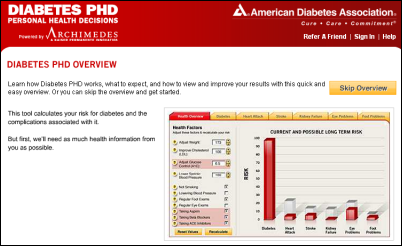
From Bernie Tupperman: “Re: Archimedes. Kaiser licenses it to corporations to screen employees, but you can use it free since it was licensed to the American Diabetes Association. You put in your numbers and it takes about 10 minutes to crunch your data to show your 30-year risk of diabetes, stroke, heart attack, and complications. You can then play with the numbers – what if you lose 20 pounds or start taking aspirin? This is a great patient motivational tool and I am busy telling EVERYONE.” That is just cool (access it here). I didn’t realize that it was Kaiser’s but it is definitely an eye-opener. Brilliant.
The VA engages the Industry Advisory Council to identify the issues involved with keeping and modernizing VistA. This sounds ominous: “… opportunities and impact of modernizing and deploying VistA upon private industry …” Surely they aren’t considering dumping VistA just to protect for-profit vendors.
Weird News Andy sniffs out this story about a high-tech scalpel that detects the presence of malignant cells from cauterization smoke, helping surgeons remove all parts of a tumor.

Gila Regional Medical Center (NM) chooses the Cboss patient payment portal.
Cleveland vendor Lakeshore Health System announces Urgicode, which notifies the pharmacy via a cellular network when a code cart is used, then allows restocking by bar code. They probably should have held off on the press release until they improved their Web site a bit, like maybe adding the company’s address, phone number, or that same press release.
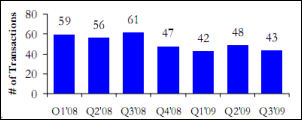
Healthcare Growth Partners releases its Q3 2009 Healthcare IT Transaction Summary (warning: PDF). Not to give away the conclusion, but merger and acquisition activity is on the upswing.
TPD forwarded a link to the Kaiser Family Foundation’s tool for comparing health care reform proposals.
I enjoy reading comments left for articles, but I need to disclose that I have the obligation to edit or remove those with advertising, personal attacks, or questionable claims. That almost never happens, but just so you know.
GE Healthcare announces that something has finally come to market from their Intermountain relationship: a new real-time decision support product. Details were skimpy and buzzwords were ample, but it might be interesting given Intermountain’s original HELP system and the work of Brent James. It will be “unveiled” at HIMSS.
Speaking of HIMSS, I keep forgetting to mention the keynote lineup for the March conference: Sprint Nextel CEO Dan Hesse (I’ve never heard of him and Sprint’s shares have dropped from $25 to $3 in four years, so I’ll pass); celebrity doctor Sanjay Gupta (you can see him free everywhere); Harry Markopolos (him I’d see – he’s the former Army officer and securities executive who tipped off the SEC boneheads about Bernie Madoff); and pilot Sully Sullenberger (who has started a safety consulting firm and might be interesting). Given the propensity of HIMSS to grab whomever is popular at the moment, I expected Balloon Boy (like Dana Carvey and that guy who sawed his own arm off in previous conferences). I should run a poll on who they should get since I haven’t been happy with the choices for several years.
Vangent, Inc. says ONCHIT has chosen its HIEOS HIE system as a component of NHIN CONNECT Gateway Version 2.2, which includes XDS.b and XCA profiles (its open source Wiki is here).
Sequel Systems announces GA of its SequelMed Patient Portal for practices, priced at $75 per provider per month according to its site.
San Francisco IPA Brown & Toland Physicians says one reason for its spat with UCSF is that the hospital didn’t want to participate in its EMR program. From Googling, it appears that the practice uses GE for practice management and Allscripts for the EMR. UCSF, you may recall, just halted its own GE Centricity Enterprise project. According to a rumor posted here last year, the IPA was threatening to cut off referrals to doctors who wanted to stop using its EMR and billing services.
More e-health fraud accusations in Canada, this time in British Columbia. Allegations have been made that health ministry officials paid falsified invoices and improperly chose vendors for an $108 million project.
And more: Canada Health Infoway is under government scrutiny for heavy use of consultants, missed deadlines, and having spent $1.6 billion so far with another $500 million on the way. The newspaper article points out that Infoway fell far short of its goal of covering 50% of Canadians with an EMR by March 2010, currently stuck at 17%. The federal auditor’s report will be out next month.

Geisinger Health System (PA) partners with Navigant Consulting to offer consulting services, including those related to EMRs and process improvement. I’m not sure how I feel about that or any other hospital business that has nothing to do with caring for their own patients, but it’s all the rage.
The managing partner of consulting firm Courtyard Group, stung hard by the reports of auditors investigating eHealth Ontario, says his firm was deeply entrenched in the project, but only because the agency’s people were clueless and without goals. He claims the company billed only $7 million of an authorized $10.6 million. His quote about the predecessor agency Smart Systems, which spent $800 million to build a non-Internet based network that went mostly unused: “I remember a conversation with the previous CEO of Smart Systems and he was very proud of the fact Ontario was the only jurisdiction in the world building a private health network. My reaction was, maybe the fact we are the only ones doing it might be an indication this is a bad idea.”
Epocrates announces that its drug reference will run on BlackBerrys.
Virtual Radiologic upgrades its vRad Enterprise Connect product work with new mobile device and speech recognition support.
Cedars-Sinai and GE Healthcare get their first lawsuit (of many, no doubt, and this one seeks class action status) over the CT radiation overdoses caused by unnoticed equipment settings.
Odd: the IT guy at an animal hospital changes the computer system to record a Valium tablet dispense when artificial tears were ordered, allowing him to pocket 18 of the tablets worth $3. The animal hospital let him slide after he quit over it, but then filed a report after the admitted addict tried to claim unemployment.
MIT’s Technology Review interviews ONCHIT head David Blumenthal. I like his terse answers: the writer asked why insurance companies don’t push EMRs, and he said, “The insurance companies have been able to pass along the costs of waste in our health-care system to their clients.” When asked about why progressive hospitals like Blumenthal’s own Mass General don’t share data, he said, “There has never been a business case for health-information exchange. As a matter of fact, there has been a negative case: if you give away your information, you may lose it. You may lose the patient.”
E-mail me.
HERtalk by Inga
California-based St. Joseph Health System cancels its Perot IT outsourcing contract and establishes a new system-wide service center in Lubbock, TX, expecting to add 60 jobs and $3.1 million in salaries the first year.
Healthcare deals represented nearly 30% of all US mergers so far this year, based on dollar value. Typically, healthcare represents only 10%.
Swedish company Anoto Group announces that the EDs at Western Maryland Health System have transitioned to MEDITECH’s EMR and are using Anoto’s digital pen and paper technology. In case you missed it, I mentioned a similar product called Shareable Ink that I saw at last week’s MGMA meeting. As long as the data capture will fully integrates with the EHR and the price point is reasonable, I think the digital pen technology has a lot of potential.
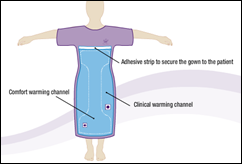
I’m thinking about trading out my Snuggie for one of these. Arizant Healthcare introduces a fully covered hospital gown that features a built-in warming system that blows warm air through tiny holes in the garment. The “Bair Paws Flex” gown sounds like the perfect Christmas gift for that hard-to-buy-for relative.
Cerner teams up with CDW to promote Cerner’s PowerWorks, the first time Cerner has offered its ambulatory suite through a national partner. Clearly Cerner wants to make sure it receives its share of the ambulatory EHR money that vendors expect to flood the market.
Picis announces that 25 hospitals have selected its Anesthesia Manager software this year. Among the new contracts are two with the VA for Picis Anesthesia Manager, PACU Manager, and Critical Care Manager.
University Children’s Eye Center (NJ) selects SRS’s hybrid EMR product. The Eye Center’s physicians are on faculty at RWJU and St. Peter’s University Hospital.
Axolotl Corp. realigns its management team, naming a new president, COO, and two VPs.

Wolters Kluwer Health announces new sales, including SwedishAmerican Health System’s (IL) and Signature Healthcare Brockton Hospital’s (MA) purchase of ProVation Order Sets to automate authoring and maintenance of evidence-based order sets. Sadler Clinic (TX) is also adding ProVation MD for procedure documentation and coding.
Oregon Health & Science University says it has received $51.5 million in ARRA funding, which has helped create 116 full- and part-time jobs. That’s about $444,000 a job, though the university does expect to add more. So far, the grants have funded over 100 research projects which require additional lab employees.
Eclipsys names six winners in its 2009 Circle of Excellence Awards. Winners had to demonstrate innovation and achievements in process improvement, adoption, or collaboration, or actively participate in the Eclipsys ClientConnect program. Recipients were given $2,000 to be donated to a charity of their choice.
Rutland Regional Medical Center (VT) agrees to serve as a national host site for visiting community hospitals. Rutland will demonstrate to visiting clinicians and administrators how they utilize various GE solutions.
The MEDSEEK folks informed us of their ranking in Deloitte’s Technology Fast 500 program, based on the company’s 346% fiscal year revenue growth over the past five years. There was no healthcare-specific grouping. but I identified several in the “software” group. Congrats to GetWellNetwork, CAREfx, Red Hat, CodeRyte, athenahealth, and other HIT companies making the list.
BryanLGH Medical Center (NE) contracts for Salar’s electronic forms tool.
NorthBay Healthcare (CA) retains PHNS to assess its readiness for obtaining ARRA funding, an example of stimulating the economy without the government spending a dime.
Physicians are using Kryptiq’s escriptMessenger software to send 310% more electronic prescriptions than last year. Its 10,000 users send about 1 million electronic prescriptions per month. I think it is safe to say that e-prescribing is finally catching on, in the same way everyone has long been predicting EMR will. Hard to believe it has been 5-1/2 years since George W. Bush made mention of computerized health records in his 2004 State of the Union address.
Social media update: I now have 25 friends on Facebook (and frankly pretty amused by the amount of time some of our readers spend doing goofy quizzes). Also, 216 connections in LinkedIn (which is about 100 less than Mr. H, but who is counting?) Also, 574 followers on Twitter (200 less than Mr. H, not that I noticed.) Forever the undercard.

E-mail Inga.




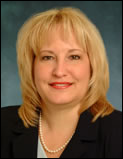
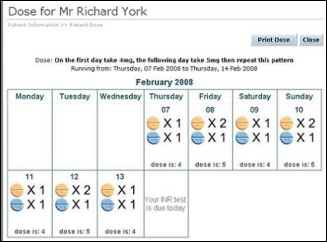








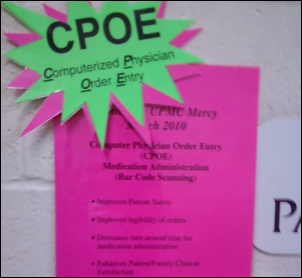


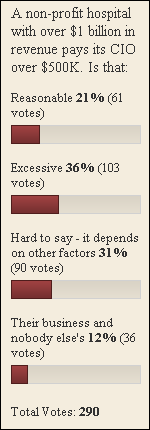





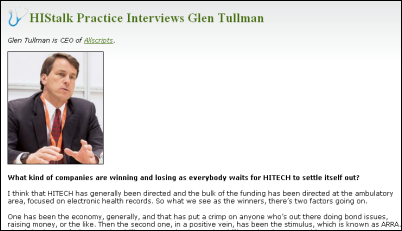



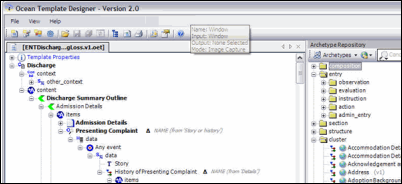















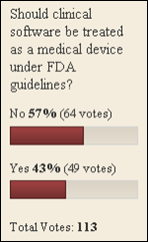
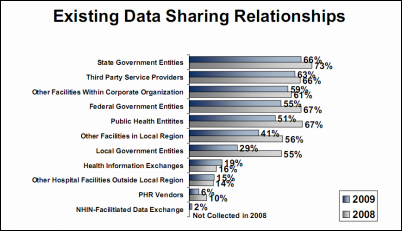
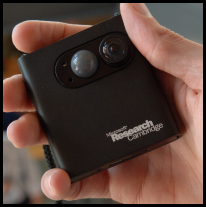




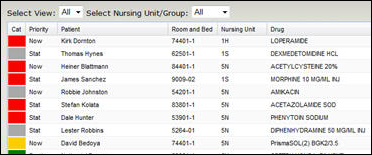



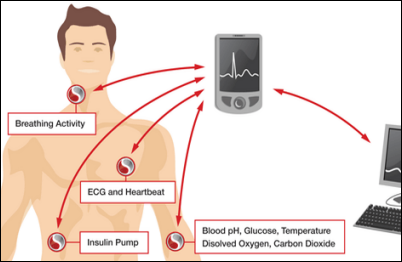


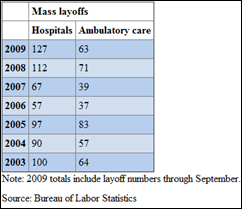






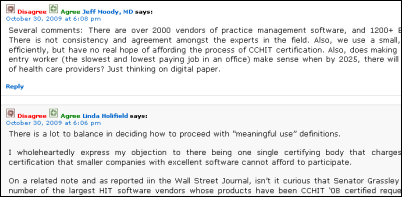
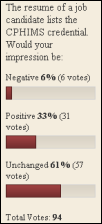



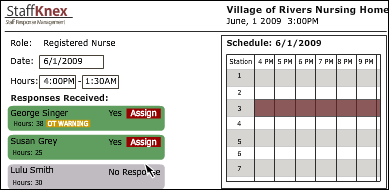


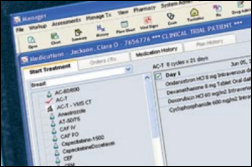

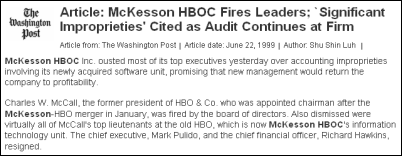

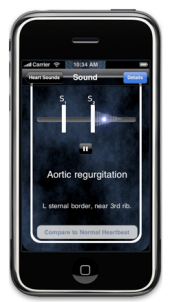











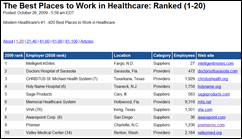






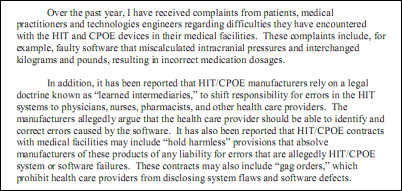






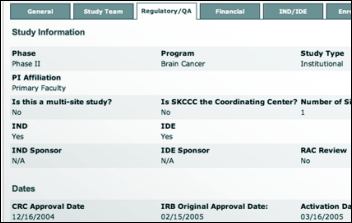

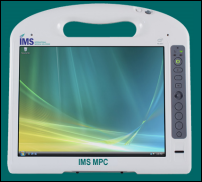

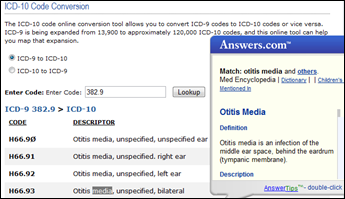













"A valid concern..." Oh please. Everyone picks the software they like and the origin of that software is an afterthought.…